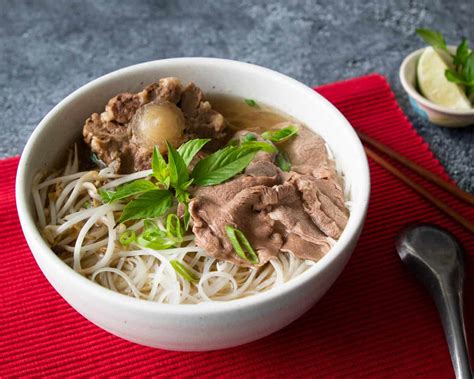How To Make Authentic Vietnamese Pho: A Step-by-Step Guide
Making authentic Vietnamese Pho is a labor of love, but the rich, flavorful broth and tender noodles are worth every minute. This comprehensive guide will walk you through each step, from preparing the broth to assembling the perfect bowl. Let's dive into the delicious world of Pho!
I. Building the Flavorful Pho Broth: The Heart of the Dish
The broth is the soul of Pho. It takes time, but the result is an unbelievably deep and complex flavor that's impossible to replicate with shortcuts.
A. Essential Ingredients for the Broth:
- Bones: A combination of beef bones (oxtail, marrow bones, shank bones) is ideal. About 3 lbs total.
- Spices: Star anise (3-4 stars), cloves (4-5), cinnamon stick (1-2 inches), cardamom pods (2-3), black peppercorns (1 tbsp), roasted ginger (1 large piece, smashed).
- Onion: 1 large yellow onion, charred slightly on all sides.
- Rock Sugar: 2-3 tablespoons, for subtle sweetness.
- Fish Sauce: 2-3 tablespoons (adjust to your taste).
- Salt: To taste.
B. The Simmering Process:
- Rinse the bones: Thoroughly rinse the bones under cold water to remove any impurities.
- Char the onion: Lightly char the onion directly on the gas flame or under a broiler until blackened in spots. This adds a depth of flavor to the broth.
- Combine ingredients: In a large stockpot, combine the bones, charred onion, spices, and rock sugar. Add enough cold water to cover everything generously (about 8-10 quarts).
- Bring to a boil: Bring the mixture to a rolling boil over high heat. Skim off any foam or impurities that rise to the surface. This is crucial for a clear broth.
- Simmer: Reduce the heat to low, cover, and let it simmer gently for at least 6-8 hours, or even longer for a richer flavor. The longer it simmers, the more intense the flavor becomes. You can even simmer it overnight!
- Strain: Carefully strain the broth through a fine-mesh sieve or cheesecloth, discarding the solids.
II. Preparing the Pho Toppings: A Symphony of Textures and Flavors
The beauty of Pho lies in its customizable toppings. Here are some essential components:
A. The Noodles:
- Rice noodles: Use wide, flat rice noodles (bánh phở). Cook according to package instructions.
B. The Protein:
- Beef: Thinly sliced beef is traditionally used. Popular choices include eye of round, sirloin, or flank steak. You can also add beef meatballs.
C. The Fresh Herbs:
- Thai basil: Its peppery flavor adds a wonderful aromatic dimension.
- Cilantro: Adds freshness and a slightly citrusy note.
- Bean sprouts: Provide a crunchy texture and a subtle sweetness.
- Lime wedges: A squeeze of lime juice brightens up the whole dish.
D. Other Toppings:
- Chili slices: For a spicy kick.
- Hoisin sauce: Adds a savory sweetness.
- Sriracha: A popular chili sauce for extra heat.
III. Assembling Your Bowl of Pho:
- Add Noodles: Place a generous portion of cooked rice noodles in a bowl.
- Ladle Broth: Pour the hot, fragrant broth over the noodles.
- Add Protein: Arrange your chosen protein on top.
- Garnish: Add your chosen herbs and toppings liberally.
- Serve Immediately: Enjoy your delicious homemade Pho!
IV. SEO Optimization Tips for Your Pho Recipe Blog Post:
- Keyword research: Use tools like Google Keyword Planner to identify relevant keywords like "Vietnamese Pho recipe," "authentic Pho recipe," "how to make Pho at home," etc.
- Optimize your title and headings: Incorporate your main keywords naturally.
- Use high-quality images: Visually appealing images of the Pho-making process and the finished dish are crucial.
- Promote your post: Share it on social media and other relevant platforms.
By following this guide, you can create a delicious and authentic bowl of Pho that will impress your friends and family. Happy cooking!
